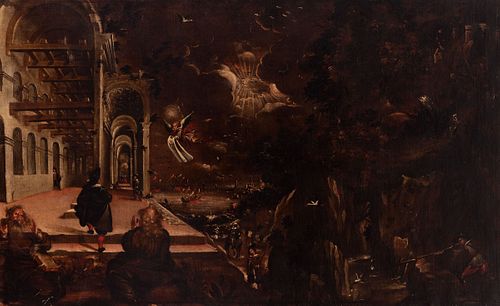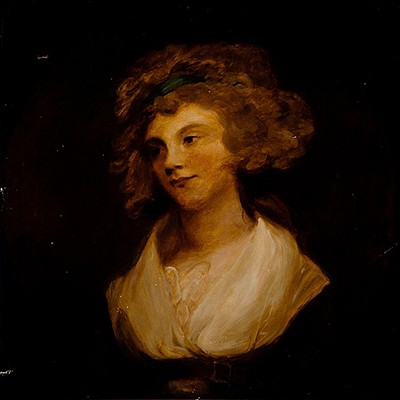Dutch school; 17th century. "Apocalypse." Oil on canvas. Relined.
About Seller
Carrer Aragó 346
Barcelona
Spain
Setdart Subastas was born in 2004 and is currently the first online art auction in Spain with solidity, prestige and reliability guaranteed by our more than 60,000 users. Setdart has a young, dynamic and enterprising team ready to successfully manage the purchase and sale of art works through custom...Read more
Two ways to bid:
- Leave a max absentee bid and the platform will bid on your behalf up to your maximum bid during the live auction.
- Bid live during the auction and your bids will be submitted real-time to the auctioneer.
Bid Increments
| Price | Bid Increment |
|---|---|
| EUR€0 | EUR€10 |
| EUR€200 | EUR€25 |
| EUR€500 | EUR€50 |
| EUR€1,000 | EUR€100 |
| EUR€3,000 | EUR€200 |
| EUR€5,000 | EUR€500 |
| EUR€10,000 | EUR€1,000 |
| EUR€20,000 | EUR€2,000 |
| EUR€50,000 | EUR€5,000 |
About Auction
Nov 25, 2021
Setdart Auction House sofia@setdart.com
- Lot Description
Dutch school; 17th century. "Apocalypse." Oil on canvas. Relined. It has slight repainting and has tape on the margins. Measurements: 91 x 146 cm. In this work the author recreates a completely fantastic scene in which dominates the presence of a powerful architecture that is conceived as a theater. In the center of the scene an angel seems to transport a chasuble with the Cross of the Order of Santiago, as if he was waiting to find an addressee that is not specified by the author, since the small figures of the earthly plane seem bewildered. Aesthetically the work can be linked to the paintings of Daniel Van Heil (Brussels, ca. 1604-1662). While in the 17th century the demand for religious art for churches radically ceased in the northern provinces, today's Holland, a monumental art in the service of the Catholic Church flourished in Flanders, partly due to the necessary restoration of the ravages that the wars had caused in churches and convents. In the field of secular art, Flemish painters worked for the court in Brussels and also for the other courts of Europe, producing a painting with classical, mythological and historical themes that was to decorate brilliantly the Royal Sites of Spain, France and England. In Holland, on the other hand, the artist's work is mainly destined to a bourgeoisie that establishes the demand for small to medium format works and themes that illustrate the life and nature of that region. While Flemish painters work on commission from a patron, Dutch painters paint to sell what they produce to the bourgeoisie. The demand for history or allegorical painting for the decoration of palatial residences almost completely disappeared; little monumental painting was produced in Holland in the 17th century, and much of it was done by Flemish artists. Although Brussels was the political center of Flanders, Antwerp was the city where the most important artistic activity had been centered since the 16th century. Antwerp had enjoyed an important position in Europe during that century, as its port had been the busiest in the Netherlands, and the Netherlands had prospered as a maritime power. The permanent blockade of the Scheldt River by the northern provinces in 1585 was to ruin trade in Antwerp, and it was Amsterdam that inherited the prosperity lost by the Flemish port.
Dimensions:
INV Number:
91 x 146 cm.
35256457 - Shipping Info
-
In-house shipping available. Please inquire at admin@setdart.com.
-
- Buyer's Premium



 EUR
EUR CAD
CAD AUD
AUD GBP
GBP MXN
MXN HKD
HKD CNY
CNY MYR
MYR SEK
SEK SGD
SGD CHF
CHF THB
THB















